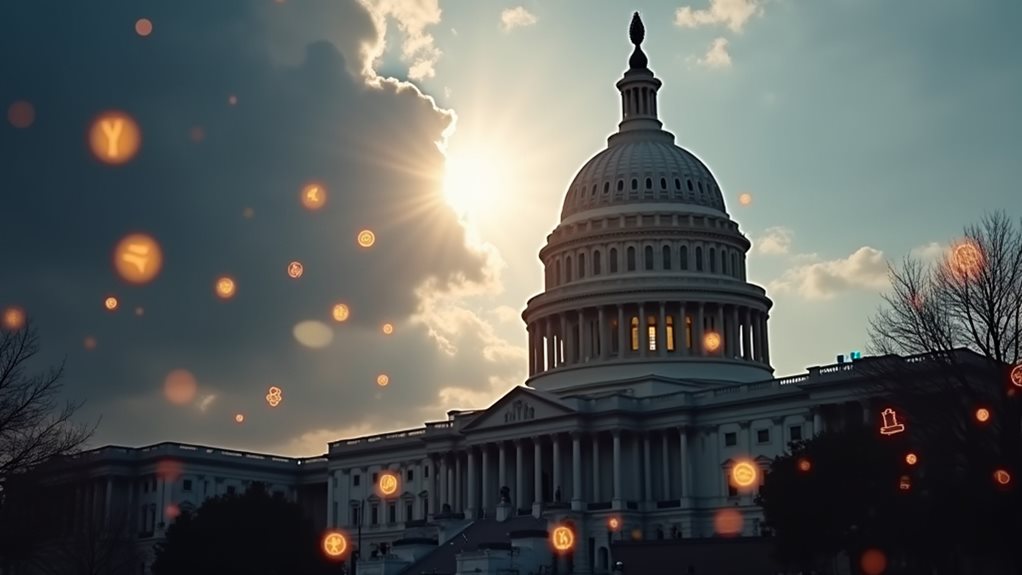California Governor Gavin Newsom launched the most ambitious government-crypto partnership in U.S. history, teaming up with executives from Ripple, Coinbase, and MoonPay to tackle the state’s notorious bureaucratic inefficiencies. The California Breakthrough Project kicked off with its first working group meeting at Ripple’s San Francisco offices in June 2025. The initiative aims to use blockchain technology to streamline government operations and improve transparency. This bold experiment could reshape how states approach governance innovation nationwide.

While most government initiatives move at the speed of molasses, California’s new blockchain experiment is racing ahead with some heavy hitters. Governor Gavin Newsom launched the California Breakthrough Project in 2025, pulling together executives from Ripple, Coinbase, MoonPay, and tech giants like Instacart and Snapchat. Because apparently, the state figured it needed some actual tech expertise to fix its bureaucratic mess.
The first working group meeting happened at Ripple’s San Francisco offices on June 6, 2025. Not exactly your typical government conference room. The whole thing screams public-private partnership, with crypto moguls and angel investor Ron Conway joining forces with state officials to streamline government operations. The focus? Using blockchain and crypto tech to make government services less painful for everyone involved.
Here’s where it gets interesting. California’s AB 1052 law kicks in July 1, 2026, allowing state and local agencies to accept cryptocurrency payments. Note the word “allowing” – nobody’s forcing anyone to do anything. Local governments get to decide for themselves whether they want to jump on the crypto bandwagon. Smart move, actually. No mandates, no fees, no drama.
California’s giving local governments the choice to accept crypto payments – no mandates, no forced adoption, just pure voluntary participation.
The blockchain push isn’t just about payments, though. These crypto executives are betting big on transparency and accountability improvements. The technology could modernize service delivery and cut through red tape. State agencies are already working with the task force to pilot blockchain solutions. Whether this actually reduces bureaucracy remains to be seen, but the effort is there.
Of course, there’s a catch. Starting July 1, 2025, digital financial asset businesses face new licensing requirements. Capital reserves, anti-money laundering obligations, consumer protections – the whole regulatory playbook. Banks and broker-dealers get exemptions, naturally. Noncompliance penalties are notable enough to make companies pay attention.
The economic impact could be considerable. Crypto expertise meeting government inefficiency creates interesting possibilities for innovation. The initiative positions California as a model for innovation-driven governance across the nation. The project maintains strict ethical safeguards throughout the development process to ensure responsible implementation. Meanwhile, federal regulators are preparing approximately 1,200 U.S. banks for expanded crypto service offerings as part of a broader national push toward digital financial integration. Whether California’s blockchain experiment actually revolutionizes state governance or becomes another expensive tech experiment, only time will tell. But with this lineup of players, it’s definitely worth watching.







